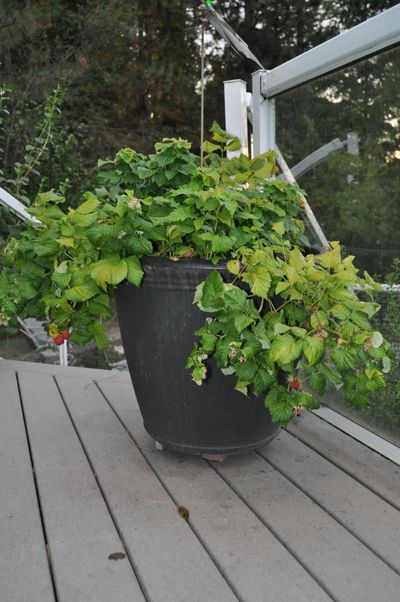Gardening: Growing raspberries easy to do, Pat Munts writes

My absolute favorite early July treat is to take a carton of whipping cream to the garden in one hand and a raspberry harvesting bowl in the other. There is nothing better than a bowl of cold cream mixed with sun-warmed berries eaten on the spot.
Raspberries are easy to grow if you pay attention to their simple requirements. They need full sun to produce a heavy crop but can tolerate some shade. Mine get shade starting about 3:30 p.m. and always produce a heavy crop.
They need well-drained soil and are sensitive to root rot if their roots stay wet for more than a few days. If you have wet conditions, build a large mound of soil and plant the canes on the top. They are not drought tolerant and will need a steady supply of water, especially through harvest.
In the spring, fertilize the plants with a 10-10-10 fertilizer and again after harvest to encourage next year’s cane growth. A new berry planting will take three years to produce its first crop. As a side note, deer love to nibble on them, so you may need to build a fence to keep them at bay.
As a perennial fruit crop, raspberries will produce for 10 to 15 years, so they will need a dedicated space in the garden not too close to other plants. They spread by underground runners that can go upward of 10 feet from the mother plant. It is best to set up a steady support system for the canes to make them easier to harvest and manage. I used 3-inch fence posts set 2 feet in the ground and then strung two strands of 10-gauge berry wire between the posts, one at 2 feet and the other at 4 feet. The canes are then tied to wire every fall. Berry wire is heavy but easy to bend. Check for it at farm supply stores.
There are several types of raspberries to try. Summer-bearing varieties produce one crop in July on 2-year-old canes. That means that the canes will grow one year and produce berries the next summer. After they produce fruit, the cane dies and needs to be removed.
Primocane varieties, also known as fall-bearing or ever-bearing types, will produce some fruit on a cane that grew the same season and then produce more on the same cane the following July. In an established planting, this means you get fruit in July from last year’s canes and then more fruit in the late summer from this year’s canes. It’s a little complicated but worth it.
With the recent introduction of the Brazelberry Raspberry Shortcake, growing raspberries in large pots on a sunny deck became easy. The plant gets only about 12 to 18 inches tall and produces a single crop of sweet, red fruit in July. Like their bigger cousins, these miniature plants produce their fruit on second-year canes and are perfect for harvesting from your deck chair. They need at least a 24-inch diameter pot to do well.
Master Gardener Pat Munts is the co-author of “Northwest Gardener’s Handbook” with Susan Mulvihill. Munts has gardened in Spokane Valley for several decades. She can be reached at pat@inlandnwgardening.com.